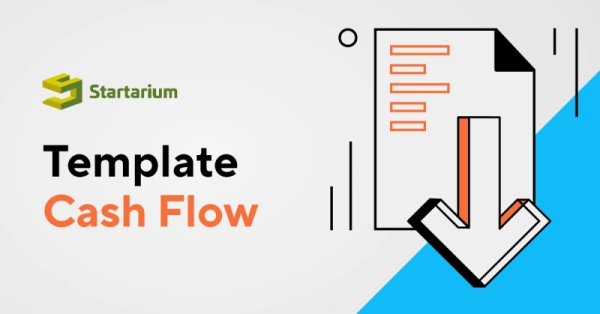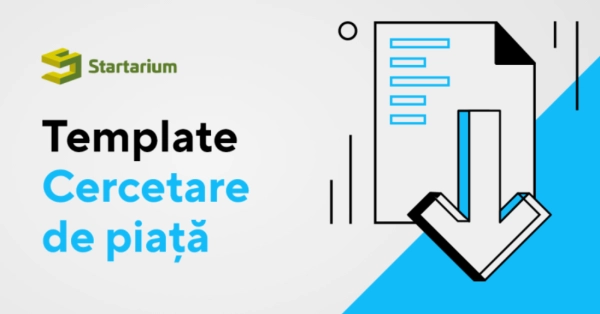Understand the logic behind the crowdfunding process and create your own campaign according to the template: with budget templates, communication strategy and concrete campaign materials.

They say that, in business, the best money you can have is your customers’ money. If you use the crowdfunding process as a validation and pre-launch campaign, you'll get just that: cash up front from your future customers.
In this article you will find:
Etymologically, crowdfunding means "obtaining funding from a crowd". It is a mechanism that can be successfully used for various industries, for both projects which are about to be launched and businesses which reached the scale-up stage.
Moreover, crowdfunding is also a valuable tool through which you benefit from all three benefits of the community simultaneously: you gain know-how, you validate your ideas and you get funding for your business idea. Being much more than a simple funding mechanism, the process itself is one through which you can test your business idea and build a solid initial customers base, while calibrating your offer according to the feedback you receive.
Start!
STEP 1: Understand the process
Before you get down to business, take 20 minutes to make sure you know the right meaning of some important terms. We have prepared two articles that will give you an overview of the entire process. Don't skip this step! It will help you set your expectations realistically and plan your next steps intelligently, from preparation to how you handle orders after the campaign.
-
10 min - Overview - Crowdfunding Basics
Brief introduction to crowdfunding
How does crowdfunding work? What are its advantages and disadvantages? Could it be a viable option for my idea or business? You will find the answer to all these questions in the course below, given by Adina Crețu, Startarium coordinator.
If you have already taken a tour through the City of Entrepreneurs, you have probably discovered resources for learning, testing business ideas and, last but not least, funding, through which entrepreneurs who are just starting out - like you - have accessed funding of over 350,000 euros.
One of the tools they had at their disposal is the one we will talk about today, namely crowdfunding: what it is, how it works, what benefits it brings you and - in a future episode - how to promote your campaign to attract funds, fame and many fans.
What is crowdfunding?
Etymologically, this term means financing obtained from a crowd and represents an alternative funding tool, in addition to the classic friends-family-other fools, attracting a business angel, contracting a bank loan or tapping into your own resources.
They say that, in business, the best money you can have is your customers’ money, and with a crowdfunding campaign, if you approach it as a validation and pre-launch campaign for your products, you will get exactly that: money up front from your future customers.
Concise dictionary
Before going into further details about how it works, let's clarify some terms that you will hear very often in connection with crowdfunding:
- Campaign
- Reward
- Supporter
- Financial objective or Target
Campaign is the term that incorporates all the actions you want to take. A campaign must have a name that is representative for what you're launching, a well-defined period of time, a goal (what you want to raise money for), a financial goal (how much you want to raise) and, last but not least, a reward structure.
The reward is what you give people in exchange for the amount you are asking for. It's what they buy online during the campaign and what you'll deliver to them after it's over, whether it's a token reward or even the actual product or service you're launching.
Supporter. In a crowdfunding campaign, the supporter is not just a fan, but a customer: a person who purchases a reward during the campaign. Because they appreciate what you propose so much that they are willing to pay in advance and wait for the delivery may for months, but also because without them and others like them your idea might not become reality, they deserve the title of supporter: your supporter and entrepreneurship supporter in general.
The financial objective or target indicates the amount you want to collect by selling the rewards, the amount you need to achieve what you have proposed to do.
According to the financial goal, there are two types of crowdfunding campaigns: with fixed funding and with variable funding.
How funding works
Variable funding works like this: if you set a financial goal of 10,000 euros but you managed to sell only 5,000 euros worth of rewards, then you will only receive these 5,000 euros
With fixed funding, on the other hand, if you raise only 5,000 euros from your goal of 10,000, the 5,000 goes back to the supporters in full. Because it is a safer and more credible way for supporters, on Startarium we run only this type of campaigns, which also protect you, as entrepreneur, from the pressure of launching with only 5,000 euros a product whose costs are actually double (this would not be a good start for your business, right?)
I hope that you have a clearer understanding of these terms and now you are probably asking yourself: “Could I do crowdfunding, is it a suitable mechanism for my idea?”
Crowdfunding is obviously not the right solution for every business. In a detailed discussion we can evaluate the eligibility and viability of your project, but if you want to prepare a checklist in advance, think about how you relate to these three factors:
- the stage of your product/service
- the degree of innovation
- the targeted market
1. Stage
The best time to start a crowdfunding campaign is when you have a prototype, maybe a beta version of the product - for which you want to get feedback from the market, but also money to finalize it and start mass production.
If you're still in the idea stage, it's a little too early; in order to attract supporters, you will need clarity regarding things such as production specifications, price, distribution, so that you have the operational capacity to deliver what you promised once the campaign ends. Clarify this first with the help of the resources in Startarium and then we can build a successful campaign together.
On the other hand, if the product has already been on the market for some time and you also have an online shop, it is already too late for crowdfunding, which often coincides with the pre-launch on the market. This does not mean that existing businesses cannot use crowdfunding, but their campaign must be about a new product, a new collection, an additional project of any kind compared to what they are already selling.
2. Innovation
The most successful crowdfunding campaigns have been for an innovative product or service. If your idea also integrates such innovative elements, you have much more chances to stimulate people's willingness to support the campaign and to attract that category of public called "innovators and early adopters", who will help you reach a critical mass of users that is so important during the early days.
But not all entrepreneurs are inventors, obviously: so, if your idea isn't a game-changer, think about your differentiators and integrate this into a series of exclusive rewards that are only available during the crowdfunding campaign.
3. Targeted market
I often receive from entrepreneurs questions like "I have a business in agriculture/ an app that revolutionizes education/a b2b service, will crowdfunding work for me?"
Well, it depends on how you defined your target audience and categories of customers: if the people you had in mind when you created the product are not online media users, do not spend time on social media and are not very familiar with online payments, then maybe this advance sales and card payment mechanism is not the most suitable for you. Start by creating a Business Canvas in the Startarium Lab and apply for a mentor for free if you need help to structure your business more clearly.
Also, if your business is a local one - for example, a playground for children in a certain city in Romania - you must take into account that your supporters, just like your customers, are exclusively young parents from the local community, for which the idea has relevance and applicability. This does not mean that you cannot use crowdfunding, but that the financial objective must be equal to the capacity of the local market to support such a project.
So far, Romanian businesses from different fields and at different stages of development have been financed through Startarium, reaching financial targets as varied as their needs, ranging from EUR 1,000 to EUR 30,000. You can be inspired by the success stories of Mater, NutriStandard, Lemnia or Zuriell and you can see here all the campaigns carried out on the platform.
Benefits
If you feel confident that your idea has the potential to be financed through crowdfunding, here are several benefits that will convince you to create a campaign draft on Startarium.ro.
Crowdfunding gives you the opportunity to test your idea, as it is a great market research method that will help you see if your idea can be capitalized. "Fail fast" will tell you experienced entrepreneurs, "fail cheap" or even for free I may add. Test before wasting even more money and effort, invest after you have a validated idea and a pipeline of initial crowdfunding customers.
A crowdfunding campaign works like a mini-acceleration program: it will force you to approach your business holistically, from product and operations to marketing and design. You will receive a lot of attention and support, visibility in social media and maybe in mass media and this will help you build a strong network and a stable business.
In addition to these generic advantages, with Startarium you also benefit from:
- The lowest commission: 0 for brokerage, 2% retained by MobilPay, the payment operator
- Access to a community of almost 18,000 users, entrepreneurs, innovators and early adopters
- Free business mentoring to help you refine your business model
- Media and marketing consultancy to increase your chances of success
I’ve already told you that the largest crowdfunding campaigns carried out by entrepreneurs of Romania were run on Startarium. We would be more than happy to set new records together and we are looking forward to hearing all about your idea at contact@startarium.ro or directly on the www.startarium.ro/crowdfunding section.
Preparing and promoting a crowdfunding campaign
If you are thinking about using crowdfunding to fund your business idea, in this article you will learn how to prepare your campaign, what you have to do during it and what to expect after it is over.
In the previous episode I explained what crowdfunding is, what benefits it can bring you and how you can evaluate whether it is a suitable tool for you or not. If you have decided it’s right for you and want to go further with the process of validation and funding through crowdfunding, in this material we will address the actual preparation of your campaign.
Purpose of a crowdfunding campaign
First of all, I recommend you to define your goal as clearly as possible before you start working on the campaign. And don’t forget: the purpose of the campaign is not necessarily the same as the financial target.
According to the vision and approach of Startarium campaigns - strongly oriented towards marketing and business objectives - the funding component is secondary and is a natural consequence of the main one. And this can be the validation of the need if you are in the prototype stage, the testing of the product or price if you are in pre-launch stage, the promotion of the product if you are already prepared to have your first customers and so on.
I challenge you to answer these questions first, because in this way both the structure of the campaign and the promotion plan flow much more naturally and congruently with a greater goal.
Once the purpose is clarified (why you are doing the campaign), determine your financial objective (the amount of money you need to reach your goal).
Main elements of a campaign
These two strategic aspects must be taken into account when building the main elements of the campaign, namely:
- Reward structure
- Presentation materials
- Promotion campaign
Let's take them one at a time:
The rewards structure, i.e. what you will sell during the campaign, the packages that the supporters can choose from.
Our approach on Startarium is an entrepreneurial one - you launch a business - that's why I recommend you to focus on rewards built around the product you're testing. You can also add 1-2 symbolic rewards, which will allow those who are not in the target of your product to make a contribution, but don't focus on that.
Try to limit yourself to a maximum of 5-7 rewards. Although variety can help you reach different segments of supporters, it can sometimes result in deadlock and discourage the purchase.
Think carefully about the rewards and above all do your calculations correctly. Determine the quantities you want to sell of each type of product, if and what discount you will offer, if shipping is included or not, how long after the end of the campaign you will deliver the products. Once the campaign is launched, you will no longer be able to modify the existing rewards, but you will be able to add new ones if unexpected opportunities arise.
Overall, the reward structure must reflect the goal and the financial objective: from the sale of all the rewards you must collect an amount at least equal to the financial objective. Be creative and try to give your supporters an experience or something they can't get otherwise, an exclusive benefit, only available during the crowdfunding.
Campaign presentation materials
Regardless of the platform on which you will launch your campaign, you must present in detail what you intend to do - don't forget that what you are actually doing is convincing some people who don't know you to pay in advance for a product that they have never held in their hands or bought online.
Don’t let yourself be overwhelmed by what you can say to persuade them and rethink your process as follows: Imagine that you are telling one of your friends about your idea! What exactly are you going to tell him? What do you think he wants to hear? What questions would he have for you?
Make sure that the campaign description includes the answers to the following questions:
- What do you want to launch? What is it - is it a prototype, a final product?
- How did you get the idea?
- What is the stake and the impact?
- What are the next steps once the campaign ends? (be very specific and transparent in order to earn people’s trust and make them support you)
- What is the budget you need and how do you plan to spend it?
- Who are you? What do you want your supporters to know about you?
In addition to a well-defined description, it is important to add some suggestive pictures (they can be pictures of your prototype, technical explanations, simulations of the final product and so on.)
Get creative and make a short video (this is required if you want to submit your campaign to us for publication). You don't need directing or editing skills. Get (or not) in front of the camera, be honest, natural and talk to your potential supporters about your project with all the passion you invested in its creation.
Promotion plan
This part would actually require a series of separate courses, so let's clarify now the strategic elements, related to approach and budget, and after you create a campaign draft in Startarium, we’ll talk more about your specific campaign and goals.
What budget should be invested in the promotion of a project for it to be successful?
On Startarium we have hosted campaigns that got funded only organically, without any promotion budgets, but also very brave campaigns with more complex objectives, with budgets of 2,000 - 3,000 euros.
Again, it depends on your goal and what success means to you. If getting the funding is your only goal, the calculation starts from top to bottom: I need X amount of money at the end of the campaign, the average cost of the rewards is Y, so I need Z no. of supporters - how do I get them and how much does it cost to reach them? This is the cost-oriented approach, in this customer acquisition situation.
Most of the time, though, success means more than getting the funding: it's about gaining a critical mass of users, getting valuable feedback and insights, building brand awareness, proving there's a serious market for your product, because you will get the funding you need later on anyway… The bolder these goals are, the less important the budget becomes.
The next question is “Where should I invest my budget, on Facebook, on Google?
Most initiators currently resort to Facebook, because it is easy to use even by those without experience in digital marketing. But if you have marketing specialists in your team, I recommend a mix of channels: the crowdfunding campaign is a miniature replica of a full-size marketing and communication campaign, and it's good for you to test channels and brand messages as well and explore guerrilla tactics which are harder to access once you are established on the market.
But don't neglect the power of simple things: Talk to as many supporters as you can and try to get people outside your circle of acquaintances to support you as well. Communicate with them regularly, keep them updated on the status of the campaign and answer any questions they may have. Don't forget to post news about the progress of your project, its stage and what will be done next.
You should know that in addition to the reward-based type of crowdfunding that you can find on most of the popular platforms, there are three more types that you can have a look at: Equity Based (SeedBlink in Romania), Debt Based and Donation Based. For the last two, Romania does not have a legal mechanism yet, unfortunately, but it doesn’t hurt to know about their existence.
STEP 2: Deconstruct some campaigns in your field
Enthusiasm and initiative are the basis of the entrepreneurial spirit. However, all skills come with their own balance mechanism, and enthusiasm, let's face it, gives us a special predisposition to reinvent the wheel.
So, before throwing yourself into crowdfunding with your characteristic enthusiasm, remember that the first online proto-campaigns date back to the 90s’, and that countless projects have been funded in this way since then, including prominent brands such as Oculus Rift, Cards Against Humanity, Pono Music or Star Citizen. Chances are you'll find examples right in the field of your idea. Try to identify, even if only intuitively, the patterns that made them successful or not. International campaigns on KickStarter , Indiegogo , GoFundMe
Similar campaigns research sheet
STEP 3: Choose the right platform for you
The first thing you need to know is that, whatever platform you choose, no crowdfunding campaign will finance itself; your involvement in promoting it is vital. Bearing this in mind, remember that the technical differences between the platforms are generally minor, the main differentiators being:
-
age and notoriety;
-
profile of the campaigns they approve;
-
charged commissions;
-
additional benefits offered.
Find out more about international options here .
STEP 4: Calculate your budget and financial goal
You remember that crowdfunding can help you tick 5 types of objectives: market validation, product testing, customer feedback collection, promotion and funding. Let’s talk about your financial goal next.
At this point, you've probably already calculated your production costs and understand at least the basics of a pricing strategy . In order to correctly calculate the amount you propose to raise by crowdfunding, you need to take into account three things:
- The rewards structure through which you will attract buyers;
- The production budget of the crowdfunding campaign;
- The promotion budget.
RECOMMENDATION: Look at the entire crowdfunding effort as a first marketing campaign - a pre-sales one, through which you aim to get customers and visibility for the future. The time, mental effort, money, people you involve, they all are resources that you will invest in this campaign, strategically, for your long-term business.
RECOMMENDATION: If your main purpose is to validate your business idea through crowdfunding, don't forget that what you are doing is a test. You can consider it successful if you reach a conclusion after it’s over - regardless of whether it is positive or negative. Invest enough resources to make sure the test is conclusive, but not more than you're comfortable losing if your idea isn't validated.
RECOMMENDATION: Resist the temptation to add too many similar rewards. The more options you offer, the harder it will be for backers to choose. Start with 5-7 rewards, at least one for every price category; if you need to supplement, you can add more along the way.
I have prepared two tables from which you can start this exploration. Sketch out a first budget version now, go through the next steps, then go back and calibrate it till you get to the final version.
Crowdfunding rewards calculator
Campaign budget calculator
STEP 5: Prepare the campaign promotion calendar
At this point you're probably eager to discover the video and description templates. You can do that in the next step, but don't launch the campaign until you've also completed the promotion calendar + your own contact database.
Many of the campaigns that don't get funded don't pay enough attention to this step.
RECOMMENDATION: Do not confuse a marketplace with a crowdfunding platform. In a marketplace, you are in the middle of an already existing audience of potential customers, to whom you only have to present your product. In crowdfunding, it is your responsibility, as initiator, to find these customers and convince them to buy your product – in advance.
RECOMMENDATION: A crowdfunding campaign is an opportunity that you will never have again to talk about your product. And what's more, it's an opportunity to get others talking about you. Don't waste its potential and try to be active through all possible channels: press, radio partnerships, influencers, friends, existing customers, etc.
RECOMMENDATION: Keep in mind that the campaign period will be a busy one, with many opportunities and unforeseen situations; you will most not have time to send e-mails, look up contacts or plan spontaneous actions. Try to prepare as much as possible before you start.
RECOMMENDATION: Don't send the same email to all your media contacts. Customize it for every friend, journalist or influencer, say exactly who you are and what you want, help them understand what you do, and remember that you're talking to people just like you.
RECOMMENDATION: You probably already know from the course about promotion that the pace of a crowdfunding campaign is much more alert at the beginning and at the end. Don't neglect the middle and don't get discouraged when the pace slows down. Even if you will see the results only in the next stage, it is important to use this time to bring more and more new arguments in favor of your product.
RECOMMENDATION: Say what you mean to say. When preparing the messages for your communication campaign, be careful about the positioning and don't be shy to ask the audience exactly what you need:
-
You don't want them to donate, but to buy a product they like in advance;
-
You don't want them to support you only with a share, but to buy the reward that suits them;
-
You don't want them to buy after the launch, you want them to buy right now to help your business survive during the upcoming months.
RECOMMENDATION: Wherever and whenever you talk about your crowdfunding campaign, don't forget to leave the link, accompanied by a call to action like "Buy X in advance: LINK”.
RECOMMENDATION: Think about how you could involve others directly, through special projects:
-
A product created together with an artist;
-
A reward created to collect donations for an association;
-
A special reward designed only for the audience of a certain influencer;
-
A demonstration or a workshop for the employees of a corporation;
-
What else comes to mind?
PR contact data base
Weekly communication calendar
STEP 6: Create a presentation video and text
Congratulations, you've reached the fun part! In addition to the budget, reward structure and promotion plan, you will obviously also need presentation materials:
-
A short video;
-
Photos or simulations of your product or service;
-
Photos of you and your team;
-
Text description of the idea.
We have prepared two templates for you that we encourage you to use. Like any template, they are certainly a good starting point, but don't feel constrained to follow them to the letter; stay creative and just keep in mind that your materials must:
-
tell your story;
-
sell your product.
RECOMMENDATION: You didn't skip the research, right? ;) How were the arguments of your favorite campaigns structured? Go through them one more time.
RECOMMENDATION: When you present your idea, put your heart into it, let your enthusiasm show, and speak simply, directly, as if you were telling a friend what you want to do.
RECOMMENDATION: Use all methods to gain the trust of your audience. You're asking them to buy in advance a product that doesn't exist, so make sure the process is as transparent as possible: introduce yourself in the video and description, ask for testimonials from those who have already tested your product, explain simply and directly what comes after the campaign funding.
RECOMMENDATION: Use images to help your audience visualize themselves using your product; sketches, simulations, photos, even drawings will be more quickly understood than your text.
RECOMMENDATION: The description and video must also be able to work separately. Most visitors will only view one of them, so make sure each one says everything they need to know. Basically, they both include a common set of information, but presented in different ways that complement each other and are not redundant when used together.
RECOMMENDATION: Don't be intimidated by the video. One of the biggest assets you have at this point is authenticity, and although it would be great to have it, you don't need a sophisticated video material to show the world your enthusiasm. First of all focus on what you want to communicate, and only then on the form – sometimes a good phone and a sunny day are enough.















